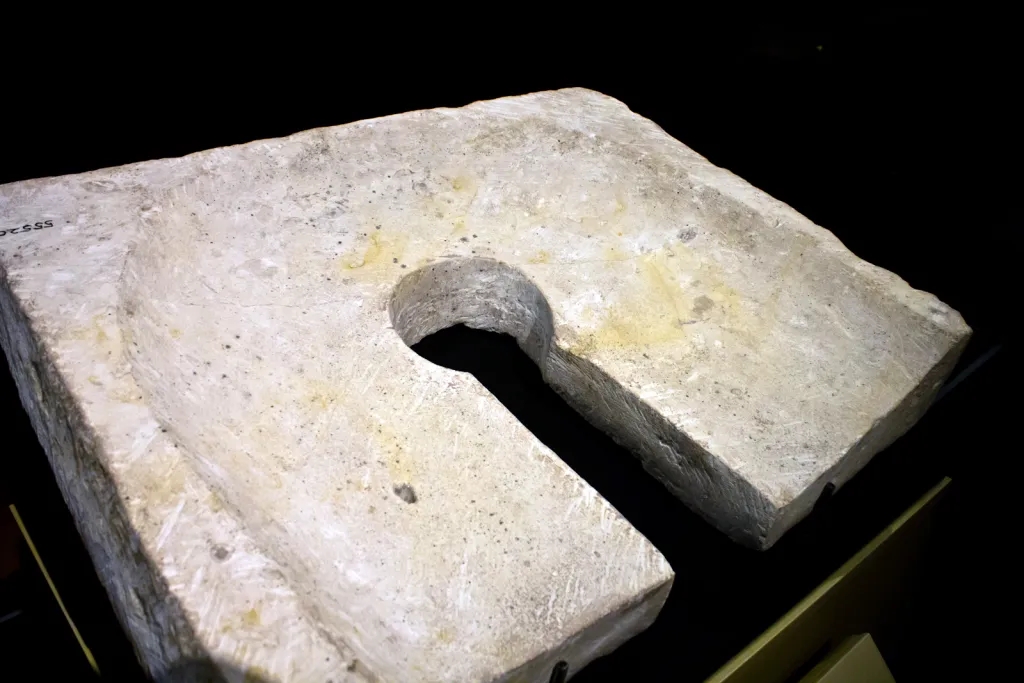By Jennifer Cromwell
On 11 May 218 BCE, a Greek man living in the Fayum was walking through the streets of the village Psya. Suddenly, from above a shower of human effluence poured down upon him, drenching him to the bone. The culprit? An Egyptian woman. But was it an accident or a malicious act by a local against a foreign interloper?
Our evidence for the altercation comes from the petition that Herakleides, the Greek man in question, wrote to King Ptolemy (Ptolemy II Philadelphus). We see the situation from his perspective, as the victim in a clear act of aggression by the woman, Psenobastis (note that Psenobastis is presumably a mishearing of the name by Herakleides, as it is a male name). The petition records his account, for which he is seeking justice at trial:
On Phamenoth 21 of year 5 in the fiscal calendar, I went to Pysa in the said nome on a personal matter. As I was passing by [her house] an Egyptian woman, whose name is said to be Psenobastis, leaned out [of a window] and emptied a chamber pot of urine over my clothes, so that I was completely drenched. When I angrily reproached her, she hurled abuse at me. When I responded in kind, Psenobastis in her own right hand pulled the fold of my cloak in which I was wrapped, tore it, and ripped it off me, so that my chest was laid quite bare. She also spat in my face, in the presence of several people whom I called to witness. The acts that I charge her with committing are: resorting to violence against me and being the one to start [the fracas] by laying her hands on me unlawfully. When some of the bystanders reproached her for what she had done, she simply left me and went back into the house from which she had poured the urine down on me. I therefore beg you, O king, if it please you, not to ignore my being thus, for no reason, manhandled by an Egyptian woman, whereas I am a Greek and a visitor …
P.Enteux. 79; translation adapted from Lewis (1986, 60–61)
For Herakleides, who was merely going about his daily business, the event was sudden, shocking, and deeply unpleasant. It is likely that the whole thing started as a simple accident. Psenobastis was simply doing what she always did, throwing the contents of a chamber pot out the window. While Egypt had toilets for many centuries by this time, they weren’t a feature of typical houses. Instead, chamber pots would be used, which needed to be emptied, and while faeces would likely have been disposed of in a specific place (to minimise risk of spreading illness), it would have been common practice to simply empty urine out the window. Herakleides describes Psenobastis as leaning out the window to empty the chamber pot, giving the impression of an intentional act against him – but unless he was looking up at her at the time (in which case he surely could have dodged the ensuing shower), he wouldn’t know whether her act was intentional or simply careless, not looking at what might be below.

Even if an accident, Herakleides was understandably outraged (who wouldn’t be, standing in a street covered in pee?) and reproached Psenobastis for her actions. Psenobastis, however, was not in the mood for his attitude and reacted aggressively, pulling and tearing his clothes, leaving his chest exposed, and increasing his humiliation in this foreign village. And here lies a key point. As Herekleides stresses, he was a Greek and a visitor (Greek xenos, a stranger or foreigner) and his appeal emphasises the ethnic dimensions involved. It was an Egyptian woman who did this to him, one who would have recognised he was not local, by his features and clothing, and her violence is interpreted as a result of her own xenophobia.
Psenobastis’ actual thoughts on the matter cannot be determined. We have no record of her account of the event. The role of ethnic tensions in exacerbating her actions cannot be dismissed, but perhaps her response was that of a harried wife and mother, taking care of her family and domestic chores, with neither time nor inclination to deal with the blustering protestations of an unknown man outside her house.
Technical Details
Provenance: Crocodilopolis, Fayum (Medinet al-Fayum).
Date: 11 May 268 BCE.
Language: Greek.
Collection: Cairo, Egyptian Museum (JdE 58963).
Designation: P.Enteux. 79; older designation: P.Lille Gr II 24 (sigla according to the Checklist of Editions); see also the entries in papyri.info and Trismegistos for further details.
Bibliography: John G. Winter (1933), Life and Letters in the Papyri (Ann Arbor: University of Michigan Press), pp. 115–116; Naphtali Lewis (1986), Greeks in Ptolemaic Egypt (Oxford: Clarendon Press), pp. 60–61; Maryline Parca (2002), “Violence by and against Women in Documentary Papyri from Ptolemaic and Roman Egypt,” Henri Melaerts and Leon Mooren (eds.), Le rôle et le statut de la femme en Égypte hellénistique, romaine et byzantine. Actes du colloque international, Bruxelles – Leuven 27-29 novembre 1997 (Leuven: Peeters), pp. 283–296; Ivo Volt (2011), “Identity and Ethnic Friction in Greek Papyrus Letters from Egypt,” in Thomas R. Kämmerer (ed.), Identities and Societies in the Ancient East-Mediterranean Regions. Comparative Approaches (Münster: Ugarit Verlag), pp. 333–340; Chrysi Kotsifou (2012), “Emotions and Papyri: Insights into the Theatre of Human Experience in Antiquity,” in Angelos Chaniotis (ed.), Unveiling Emotions: Sources and Methods for the Study of Emotions in the Greek World (Stuttgart: Franz Steiner Verlag), pp. 39–90.

So interesting! Poor guy.
LikeLiked by 1 person